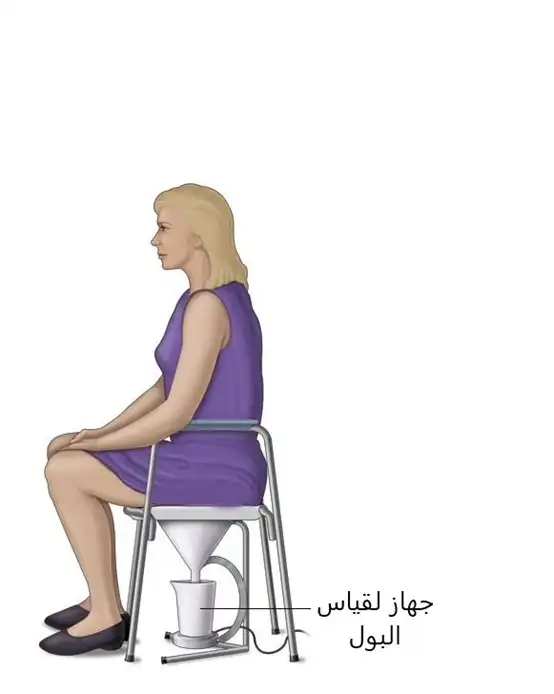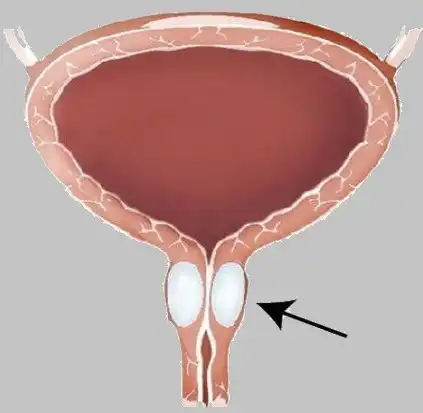سلس البول عند النساء يشكل مشكلة حقيقية لدى الكثيرات، حيث أن عدم التحكم في البول عند النساء يؤثر على نوعية حياتهم بشكل كبير، لذلك قامت تركيا بأبحاث عدة في هذا المجال.
إن سلس البول عند النساء هو فقد التحكم بتسريب البول، حيث يتسرب البول من غير إرادة المريضة، مما يشكل إحراج وإزعاج كبير لها، وهذه الحالة تزداد بشكل كبير مع التقد في العمر.
اسباب عدم التحكم في البول عند النساء كثيرة، ولسلس البول عدة أنواع وأصناف، فهل يمكن علاج سلس البول عند النساء بشكل نهائي؟ وما هي أدوية علاج سلس البول عند النساء؟ وما هي تمارين كيجل لعلاج سلس البول عند النساء؟ تابع معنا في هذا المقال.
ما هو سلس البول عند النساء؟
سلس البول urinary incontinence هو التبول دون قصد أي أنه خروج لا إرادي للبول، يصيب الرجال والنساء لكنه أشيع عند النساء، خاصة مع التقدم في السن.
من الصعب تحديد عدد النساء المصابات بسلس البول بالضبط، لأن الكثير من النساء يشعرن بالحرج الشديد من التحدث عنه، قد يكون الأمر محرجاً ومزعجاً لهم ويمكن أن يؤثر على كل مجال من مجالات حياة المرأة.

تتوقف بعض النساء عن الخروج أو ممارسة النشاط البدني بسبب ذلك، يمكن أن يؤثر سلس البول على حياتهن الجنسية و الاجتماعية وعلاقاتك ويؤدي أحياناً إلى الاكتئاب.
أنواع سلس البول عند النساء
هناك نوعان رئيسيان من سلس البول:
سلس البول الإلحاحي
بهذا النوع تشعر السيدات بالحاجة المفاجئة إلى التبول دون سابق إنذار وهو أمر يصعب تأجيله (عليها الذهاب إلى المرحاض حينها فوراً).
سلس البول الإجهادي
يحدث سلس البول الاجهادي عندما يحدث نزول للبول أثناء العطس أو السعال أو إجهاد نفسك.
يمكن أيضاً أن يكون “سلس البول المختلط” مما يعني أن بعض السيدات قد تعانين من سلس البول الإجهادي وسلس البول الإلحاحي معا.
يحدث فرط نشاط المثانة عندما تشعر برغبة قوية في التبول في كثير من الأحيان، بما في ذلك في الليل، وفي بعض الأحيان، يؤدي هذا إلى سلس البول الإلحاحي.
أقرأ أيضاً في موقعنا عن تنظير الحالب في تركيا وعن الجراحة الروبوتية لعلاج سرطان الكلى في تركيا.
أعراض سلس البول عند النساء
العرض الرئيسي لسلس البول هو تسرب البول، لكن هذا يمكن أن يختلف قليلاً، من تسرب بضع قطرات إلى إفراغ المثانة جزئيا أو كليا.
قد لا تتمكن النساء المصابات بسلس البول الإلحاحي من الوصول إلى المرحاض في الوقت المناسب، تحتاج بعض النساء أيضاً إلى الذهاب إلى المرحاض ليلاً وأحيانا يحدث تسرب في الليل أيضا.
إذا كنت تعاني من سلس البول الإجهادي، فإن العَرَض الرئيسي هو تسريب البول عند القيام بأشياء مثل السعال، والعطاس والضحك، أو رفع شيء ثقيل، أو ممارسة الرياضة.
قد يكون لديك أعراض أخرى مثل:
- الحاجة إلى التبول في كثير من الأحيان
- الشعور بالضغط في المهبل
- تقطر البول بعد أن تذهب إلى المرحاض
- حرقة عند التبول
أسباب سلس البول عند النساء
يعتمد سبب سلس البول على نوع السلس ولذلك تتنوع أسباب سلس البول عند النساء، وتختلف من امرأة إلى أخرى.
يحدث سلس البول الإلحاحي عندما تنقبض عضلة جدار المثانة بوقت لا ترغب به في ذلك، هذا يجعل المريضة تشعر بالحاجة إلى التبول بشكل عاجل، يمكن أن يتطور هذا مع تقدمك في السن أو يكون بسبب حالات طبية أخرى مثل الأمراض العصبية مثل السكتة الدماغية أو التصلب المتعدد.
بعض الأشياء التي تزيد من احتمالية الإصابة بالسلس:
- الحمل والولادة: يؤدي ذلك إلى شد عضلات قاع الحوض وإضعافها، مما قد يتسبب بالإصابة بسلس البول، إن الولادة المهبلية، أو قطع منطقة العجان (المنطقة الواقعة بين المهبل والشرج) أثناء الولادة أو الحمل، كلها مرتبطة بسلس البول الإجهادي.
- زيادة الوزن
- الإمساك
- التقدم في العمر: كلما تقدمت في العمر كلما زادت احتمالية إصابتك بأي نوع من سلس البول.
- أفراد مقربون آخرون من العائلة يعانون من سلس البول الإجهادي.
- حدوث هبوط تناسلي: يحدث هذا عندما ينزلق عضو أو أكثر من أعضاء الحوض كالهبوط الرحمي من الوضع الطبيعي للأسفل وينتفخ في المهبل.
تشمل الأسباب الأخرى لسلس البول ما يلي:
- التهابات الجهاز البولي
- شرب الكثير من الكافيين
- اضطرابات مرضية كمرض باركنسون
- سعال شديد طويل الأمد
- نشاط بدني شاق مثل رفع الأثقال
تشخيص سلس البول عند النساء
إذا كان البول يتسرب منك بشكل لا إرادي ويزعجك أو يؤثر على حياتك اليومية، يجب أن ترى الدكتور المختص.
سوف يسألك الطبيب عن الأعراض والتاريخ الطبي، معرفة ذلك يساعد طبيبك في معرفة نوع سلس البول لديك واستبعاد أي أسباب كامنة، سيسألك طبيبك أيضًا عن أي أدوية قد تتناولها.
يقوم الطبيب بفحص جسدي أيضاً، سيتحسس بطنك وربما يجري فحصا داخليا، هذا يعني وضع إصبع في المهبل ويطلب منك الضغط على عضلات قاع الحوض، يمكن أن يساعد ذلك في إظهار مدى جودة عملها.
قد يطلب منك طبيبك تدوين كمية البول التي تتبولها عند ذهابك إلى المرحاض لبضعة أيام، وما إذا كنت تعاني من سلس البول أم لا.
من الأفضل أن تسجل ذلك في أيام العمل وغير أيام العمل لإعطاء صورة كاملة.
اقرأ في موقعنا أيضا عن علاج سلس البول عند الرجال بشكل نهائي.
الاختبارات لتشخيص سلس البول عند النساء
اعتمادا على الأعراض الخاصة بك، قد يقوم طبيبك بطلب تحليل بول لمعرفة ما إذا كنت مصابة بعدوى أو إنتان.
يمكنهم أيضا إحالتك إلى أخصائي لإجراء مزيد من الاختبارات، مثل:
- فحص بالموجات فوق الصوتية لمثانتك بعد التبول
- اختبارات ديناميكية البول

بإمكانك أيضاً أن تقرأ على موقعنا عن علاجات حصبات الكلى في تركيا.
علاج سلس البول عند النساء
يبدأ علاج سلس البول عادةً بالعلاجات الأقل توغلاً أولاً، هذا يعني تجربة تغييرات نمط الحياة، بالإضافة إلى العلاجات الأخرى قبل التفكير في الجراحة، ويعتمد العلاج الذي تحتاجه على نوع سلس البول الذي تعاني منه.
هناك ثلاث علاجات رئيسية لسلس الإجهاد:
تمارين كيجل للنساء لعلاج سلس البول
تساعد عضلات قاع الحوض في التحكم في المثانة والأمعاء، يمكن أن يساعد تقوية هذه العضلات باستخدام هذه التمارين في بعض الأحيان في تخفيف سلس البول.
سيتم إطلاعك على كيفية القيام بهذه التمارين وستحتاجين إلى القيام بها ثلاث مرات يوميا لمدة ثلاثة أشهر لمعرفة ما إذا كانت تساعد أم لا، إذا كنتِ تعاني من مشاكل في شد عضلات قاع الحوض، فقد يساعدك استخدام الارتجاع البيولوجي والتحفيز الكهربائي.
الارتجاع البيولوجي هو عندما ترسل المستشعرات الموضوعة على جلدك أو في المهبل إشارات إلى شاشة عندما تضغط على عضلات قاع الحوض.
يمكن أن يساعدك هذا في إظهار مدى جودة أداء التمارين، يستخدم التحفيز الكهربائي تياراً كهربائياً لتحفيز عضلات قاع الحوض من مسبار كهربائي صغير يوضع في المهبل.

أدوية علاج سلس البول عند النساء
هناك بعض الأدوية التي قد تساعد في علاج سلس البول، ولكنها غالباً ما تسبب آثاراً جانبية ولا تُعطى عادةً كعلاج أولي، إذا كنت لا ترغب في إجراء عملية جراحية، سيعيطك الطبيب أفضل دواء لظروفك الخاصة.
جراحة سلس البول عند النساء
هناك العديد من العمليات الجراحية لعلاج سلس البول بأنواعه، اعتماداً على سبب سلس البول، وغالبا يقترح طبيبك إجراء جراحة لسلس البول إذا كنتِ قد قد مررتي بالعلاجات غير الجراحية أولاً ولم تنجح في ذلك.
جراحة سلس البول عند النساء في تركيا
إذا لم تساعدك العلاجات الأقل توغلاً، فسوف يحيلك طبيبك إلى أخصائي لمناقشة الجراحة، تشمل الأنواع الرئيسية لجراحة سلس البول ما يلي:
تعليق المهبل
التعليق المهبلي هو عملية لعلاج سلس البول الإجهادي، يحدث سلس البول الإجهادي عند التبول عن طريق الخطأ لأنك تفعل شيئا يشكل ضغطا إضافيا على البطن والمثانة، يمكن أن يكون الإجهاد الإضافي ناتجا عن أنشطة مثل الضحك، السعال، العطس، ممارسة الرياضة أو القفز.
يمكن أن يحدث سلس البول عند النساء الاجهادي بسبب تغيرات لدى المريض في العضلات والأربطة التي تمسك المثانة وتمنع حدوث تسريب البول، أو ما يعرف بعضلات قاع الحوض والعضلة العاصرة وهي حلقة العضلات التي تغلق المثانة bladder.
في التعليق المهبلي، يرفع الجراح عنق المثانة إلى الموضع الصحيح ويثبتها في مكانها بالغرز، هذا يساعد على منع تسرب البول.
يعمل التعليق المهبلي بشكل جيد كعلاج طويل الأمد لسلس البول الإجهادي لدى معظم النساء، إذا نجحت العملية وسارت الأمور على خير، يمكنها تحسين نوعية حياتك بشكل كبير.
ومع ذلك، قد لا تنجح عملية التعليق المهبلي في علاج سلس البول عند النساء، قد يستغرق التعافي الكامل من الإجراء خمسة أسابيع أو أكثر، هناك أيضا خطر حدوث بعض المشكلات أثناء العملية أو بعدها.
إجراءات جراحية أخرى لعلاج سلس البول عند النساء
- إجراء المعلاق حيث يستخدم الجراح قطعة من الأنسجة الخاصة بك كعلاقة لدعم مجرى البول
- إجراء الشريط حيث يتم وضع شبكة بلاستيكية شبيهة بالشريط تحت مجرى البول كدعم
- يمكن حقن مادة مثل السيليكون لتكثيف وتمكين المنطقة المحيطة بمجرى البول للمساعدة في أن تظل مغلقة
- استخدام العضلة العاصرة الاصطناعية هو خيار يُستخدم فقط إذا لم تنجح العلاجات الأخرى

ماذا يحدث أثناء التعليق المهبلي؟
يمكن أن يكون لديكِ تعليق مهبلي كجراحة مفتوحة أو جراحة ثقب المفتاح (بالمنظار)، تخضع معظم النساء لعملية جراحية مفتوحة لأن الجراحة بالمنظار غير متوفرة في جميع المستشفيات.
إذا خضعتي لعملية جراحية مفتوحة، فسيقوم الجراح بعمل قطع في أسفل البطن للسماح له بالوصول إلى المثانة، عادة ما يكون القطع منخفضا جدا.
سيرفع الجراح عنق المثانة عن طريق خياطة الجزء العلوي من المهبل بالأنسجة الموجودة في الجزء الخلفي من عظم العانة، قد يضع الجراح بعد ذلك كاميرا صغيرة داخل مثانتك للتحقق من أن الغرز في المكان الصحيح، ومن عدم وجود إصابات في مثانتك.
ماذا تتوقع بعد عملية التعليق المهبلي؟
ستحتاجين إلى الراحة حتى زوال آثار التخدير، هناك أدوية متاحة لتخفيف أي ألم أو إزعاج قد يكون لديكِ.
إذا كنت قد خضعتِ لعملية جراحية مفتوحة، فقد يكون لديكِ أنبوب (قسطرة) داخل مثانتك عندما تستيقظين، وهو مسؤول عن تصريف البول من المثانة إلى كيس خارجي.
أو قد تعلمكِ الممرضات بكيفية إجراء القسطرة الذاتية، يحدث هذا عند إدخال قسطرة يمكن التخلص منها ثم إخراجها في كل مرة تحتاجين فيها إلى إفراغ مثانتك، إذا كنتِ بحاجة إلى القيام بذلك، فعادةً ما يكون ذلك لبضعة أيام فقط.
قد يكون لديكِ بعد العملية مفجر وهو عبارة عن أنابيب تتدفق من الجرح إلى كيس أو زجاجة في اليوم الأول حيث تسحب أي دم أو سوائل.
من المهم ألا تصابي بالإمساك، لأن الضغط بعد العملية يمكن أن يشكل ضغط على الجرح مما يسبب ألم.
الشفاء من تعليق المهبل
من المحتمل أن تعودي إلى أنشطتك المعتادة بعد حوالي أربعة أسابيع، وقد يستغرق الأمر عند بعض النساء وقتا أطول من ذلك، قد تتعافى بسرعة أكبر إذا أجريت جراحة تنظيرية (ثقب المفتاح) بدلاً من الجراحة المفتوحة.
من الأفضل عدم ممارسة الجنس أو ممارسة التمارين الرياضية أو رفع أي شيء ثقيل لمدة ستة إلى ثمانية أسابيع بعد العملية.
قد يكون جرحك غير مريح لمدة تصل إلى ستة أسابيع بعد العملية، إذا كنتِ بحاجة إلى تخفيف الآلام، فيمكنكِ تناول المسكنات مثل إيبوبروفين أو باراسيتامول.
مضاعفات تعليق المهبل
تتعافى معظم النساء جيدا بعد إجراء عملية التعليق المهبلي، ومع ذلك، فهو لا ينجح مع كل امرأة بالضرورة وقد تستمر المعاناة من سلس البول لدى بعض النساء بعد العملية.
تشمل المضاعفات المحتملة ما يلي:
- العدوى التي يمكن أن تكون في الجرح أو داخل الحوض أو عدوى في المسالك البولية
- النزيف
- مشاكل في التبول
- فرط نشاط المثانة (قد يحتاج المريض إلى التبول في كثير من الأحيان وبشكل عاجل)
- الأضرار التي لحقت مجرى البول أو المثانة
- هبوط تناسلي حيث يتحرك جزء من الرحم إلى أسفل ليحدث انتفاخا في جدار المهبل
- آلام أثناء الجماع
علاج سلس البول الليلي عند النساء
هناك العديد من الأشياء التي يمكنك القيام بها للمساعدة في علاج سلس البول الليلي عند النساء، قد يقترح طبيبك بعضا مما يلي:
- التقليل من شرب الكافيين
- فقدان الوزن إذا كنتِ تعانين من السمنة
- تغيير كمية السوائل التي تشربينها كل يوم
- علاج أي إمساك وهذا يعني تناول المزيد من الفاكهة والخضروات وشرب الكثير من السوائل
- القيام بتمارين أقل مجهودا
قد تجد أيضا أنه من المفيد استخدام منتجات سلس البول، على سبيل المثال:
- ارتداء ضمادات في ملابسك الداخلية لامتصاص أي تسرب.
- استخدام مبولة محمولة.
- استخدام الأجهزة التي تدخلها في مجرى البول أو المهبل لمنع التسربات (لا يمكن استخدامها طوال الوقت، ولكنها قد تساعد مؤقتا في بعض المواقف كأثناء التمرين).
- تعلم القسطرة الذاتية (يتضمن ذلك إدخال أنبوب رفيع ومرن في مجرى البول لتصريف البول عند الحاجة، إذا كان هذا هو الخيار المناسب لك، فسوف يعلمك أخصائي سلس البول كيفية القيام بذلك).
في النهاية نجد أن سلس البول عند النساء أو عدم التحكم في البول عند النساء ذو تأثيرات سلبية على نفسية وحياة المريضة، لذلك يجب عدم الخجل من هذه المشكلة ومراجعة الطبيب فيها لترتاحي من هذ المشكلة بشكل نهائي.
المصادر:
